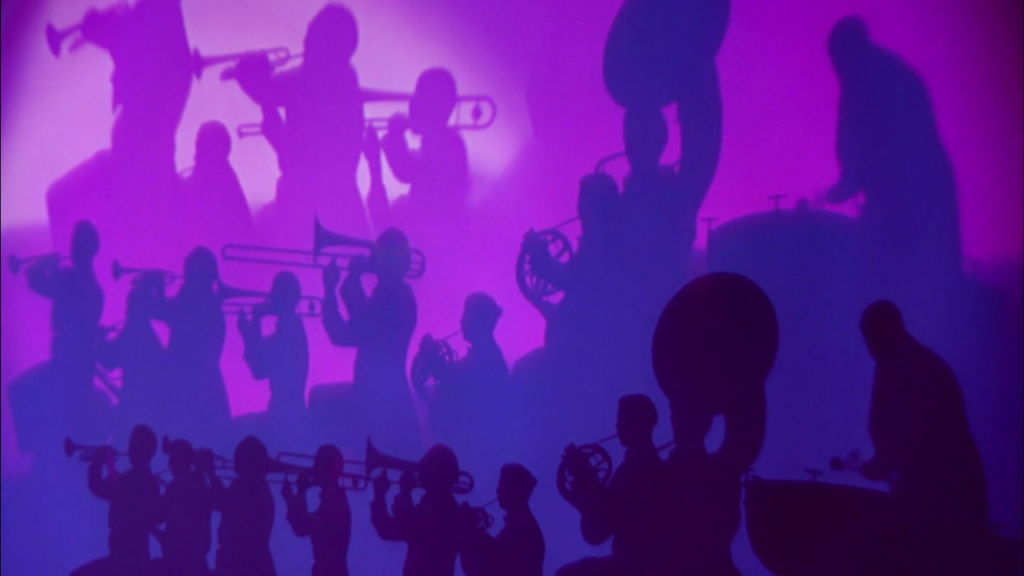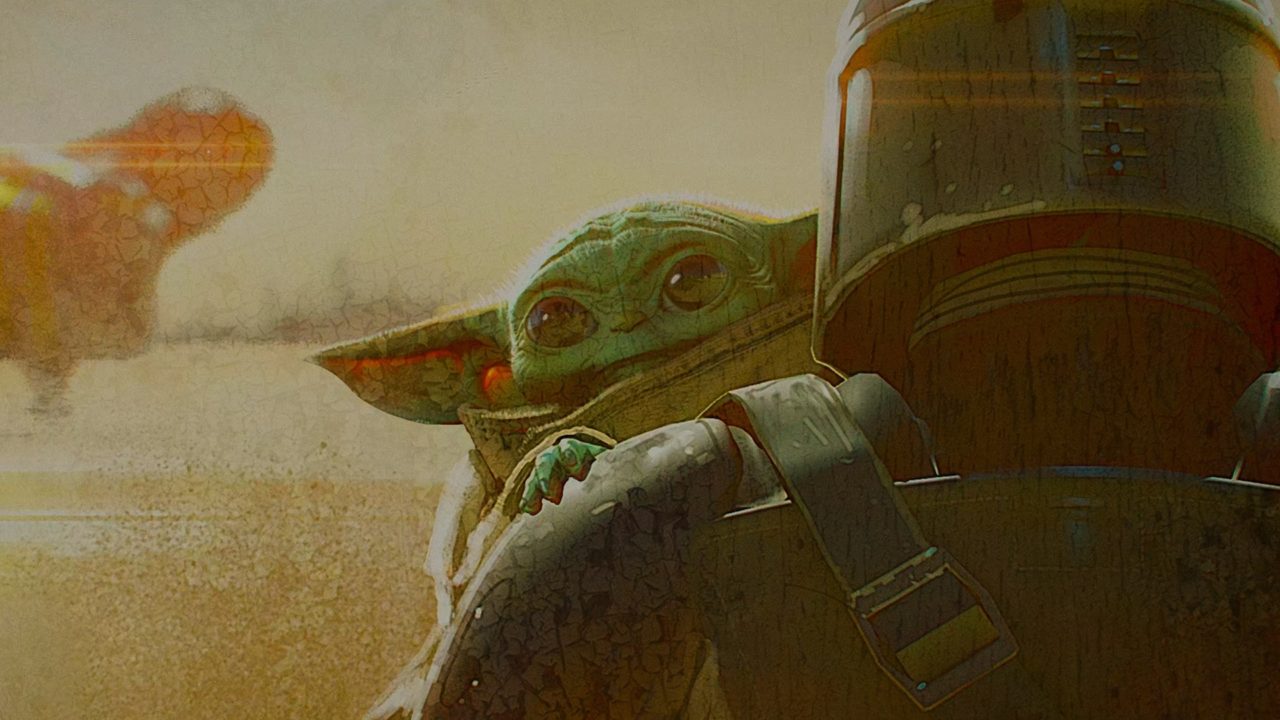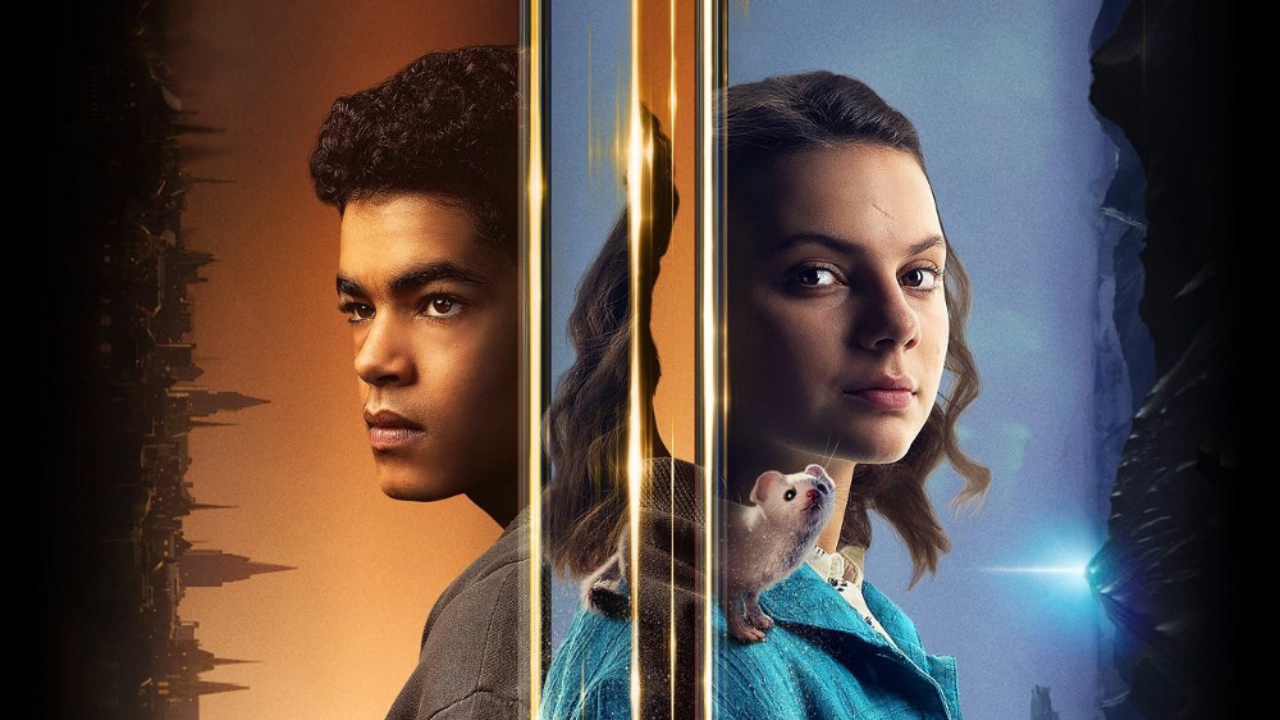Fantasia, the animated feature film released by Walt Disney Productions turns 80 today, November 13th, 2020 (well, technically yesterday, but seeing as how I’m sitting in my office in Malaysia as I type this, it’s today, what with time difference being what it is).
This is probably the earliest memory I have of sitting down and actively watching something. Sure, I probably watched whatever cartoon was on TV as a child, but Fantasia was the first one I remember wanting to watch, popping that VHS into the machine again and again, to watch the colourful fairies and dancing hippos.

Watching it again in 2020, with a lifetime of consuming television and film, I am immediately struck by how modern and avant-garde it must have been in 1940. The film opens with the Philadelphia Orchestra getting settled into their places, all done in colourful shadow. It is all very dramatic, but also very formal. It’s as if you’ve found yourself, tails and all, transported to a concert hall for an evening at the opera. Composer Deems Taylor then walks on to the stage to play the role of the event’s master of ceremonies, providing an introduction to each piece of classical music, as well as the animated feature that will accompany it. There is a formality to the film. A sense of “adultness” and maturity that I must have blocked out watching it as a child.
Deems Taylor talks about the different segments of Fantasia the way classical music is spoken about in classical music literature. How the different animated segments are works of artists, how the images and stories were inspired by the music that accompanies it. Deems Taylor talks about how Fantasia consists of three distinct kinds of music, the ones with a definite story, the ones with no plot but nevertheless “paints a series of definite pictures,” and finally, music that exists for its own sake. The first piece, Toccata and Fugue in D Minor, by Johan Sebastian Bach, falls squarely into that final group. As Deems Taylor introduces the piece, he talks about how this first segment is meant to introduce you, the audience, to the idea of what you are about to see.

Your focus is first pulled to the conductor, Leopold Stokowski, then the different players in the orchestra, before finally, the music takes over and your mind starts to wander, starts to see colours and shapes, driven by the music. Or in this case, artists interpreting the music.
Watching it again in 2020 also brings with it baggage, of political correctness, and of the constant and rampant racism of the time. One of my favourite segments, the one accompanying one of Tchaikovsky’s Nutcracker Suites, also known as the Chinese Dance, featured six “adult” mushrooms dancing around a younger childlike mushroom. The mushrooms were designed to look oriental, with the mushroom tops reminding us of the wide brimmed conical Chinese straw hats, and, God help me, slits for eyes. On Disney+, the film is preceded by a warning, reminding audiences that it includes negative depictions of stereotypes that in our current moment feel jarring and inappropriate.

Watching it again in 2020, at 37, I’m most struck by how mature Fantasia really is. Everything about it feels like its intended audience was the mature market. From the song choices (not all of them are joyful, or happy, or light), to the themes of light versus dark, of good versus evil (“Night on Bald Mountain”), to its run time of just over two hours, this never felt like it was intended for children. But it was. And it still should be.
There isn’t that blind urgency and manic pace to ensure the short attention span of children is never lost. Deems Taylor never talks down to the audience and never tempers his message as if talking to young children. Fantasia is cartoon as education. Its intent is for more than just for entertainment. It teaches you life. It teaches you that music can be beautiful to see and to hear, to not take shortcuts (“Sorcerer’s Apprentice”), and that Zeus is, and forever will be, a massive dickhead (“The Pastoral Symphony”). Fantasia teaches children the value of art and the beauty of music.

Watching it as a child, I missed out on Deems Taylor’s introductions to each piece of music and animated segment. Of how he talks about the devil Chernabog, and the evil spirits, and restless souls being driven back by the sound of a church bell as night fades into dawn (super scary). Of how the animal ballet tells the story of a day, the ostriches (morning), the hippos (afternoon), the elephants (early evening), and the alligators (night), each playing its own part (super fun). Or the history of early Earth, from the big bang to the dying out of the dinosaurs (super traumatic).
There is so much to read about Fantasia, and if you’ve gone back to watch it recently, here’s the Wikipedia entry for it. From it’s production, to it being the first commercial film to be shown in stereophonic sound, an animated feature film from 1940 still stands toe to toe against anything released in the modern age. Words like “classic” and “timeless” get thrown around a lot in cinema. But for something to have been released 80 years ago, Fantasia is a true classic. I wonder how many kids grew up to be ballet dancers and play in orchestras because of it.
Fantasia (1940)
Disney+
126 minutes
Directors: Samuel Armstrong, James Algar, Bill Roberts, Paul Satterfield, Ben Sharpsteen, David D. Hand, Hamilton Luske, Jim Handley, Ford Beebe, T. Hee, Norman Ferguson, and Wilfred Jackson
Cast: Deems Taylor and Leopold Stokowski









Follow Us